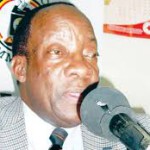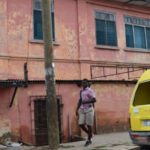At least 41 Palestinians have been killed and 1,800 wounded by Israeli troops in clashes on the Gaza border, Palestinian officials say.
The violence came as the US opened its embassy in Jerusalem, a controversial move that has infuriated Palestinians.
They see it as clear US backing for Israeli rule over the whole city, whose eastern part Palestinians lay claim to.
President Donald Trump told the opening ceremony via videolink the Jerusalem move had been a “long time coming”.
He said: “Israel is a sovereign nation with the right to determine its own capital, but for many years we failed to recognise the obvious.”
He also said the US remained “committed to facilitating a lasting peace agreement”.
What has happened at the border?
Palestinians hurled stones and incendiary devices while the Israeli military used snipers, as black smoke poured from burning tyres.
The Hamas-run health ministry said children were among those killed on Monday.
The mass demonstrations, led by Gaza’s Islamist rulers, Hamas, are part of a six-week protest dubbed the “Great March of Return”.
Israel’s army said 35,000 Palestinians were taking part in “violent riots” along the security fence and that its troops were operating “in accordance with standard procedures”.
- Jerusalem: Trump move prompts negative world reaction
- Trumplomacy: Key takeaways from Jerusalem policy shift
Israel says the protests are aimed at breaching the border and attacking Israeli communities nearby.
The Israeli military said it had killed three people trying to plant explosives near the security fence in Rafah.
It said aircraft had also “targeted Hamas military posts near the Jabalia area after troops were fired upon”.
There have also been violent clashes between Israeli police and protesters who raised Palestinian flags outside the new embassy. Several protesters were detained.
What led to the Gaza protests?
Palestinians have held weekly protests in the run-up to their annual commemoration of what they call the Nakba or Catastrophe, when hundreds of thousands of their people fled their homes or were displaced following the foundation of the Israeli state on 14 May 1948.
Scores of Palestinians have been killed since the protests began. Thousands more have been wounded.
Hamas, which is in a state of conflict with Israel, had said it would step up protests in the lead-up to Tuesday, the official Nakba commemoration.
It says it wants to draw attention to what Palestinians insist is their right to return to ancestral homes in what became Israel.
“Today is the big day when we will cross the fence and tell Israel and the world we will not accept being occupied forever,” a science teacher in Gaza, Ali, told Reuters news agency.
Why is the embassy move so controversial?
The status of Jerusalem goes to the heart of the Israeli-Palestinian conflict.
- Israel and the Palestinians: Can settlement issue be solved?
- What are alternatives to a two-state solution?
Israeli sovereignty over Jerusalem is not recognised internationally and, according to the 1993 Israel-Palestinian peace accords, the final status of Jerusalem is meant to be discussed in the latter stages of peace talks.
Israel has occupied East Jerusalem since the 1967 Middle East war. It effectively annexed the sector, though this was not recognised by any countries until Mr Trump’s declaration in December 2017.
Since 1967, Israel has built a dozen settlements, home to about 200,000 Jews, in East Jerusalem. These are considered illegal under international law, although Israel disputes this.
Various countries once had embassies based in Jerusalem but many moved after Israel passed a law in 1980 formally making Jerusalem its capital.
President Trump’s decision last year to recognise Jerusalem as Israel’s capital broke with decades of US neutrality on the issue and put it at odds with most of the international community.







